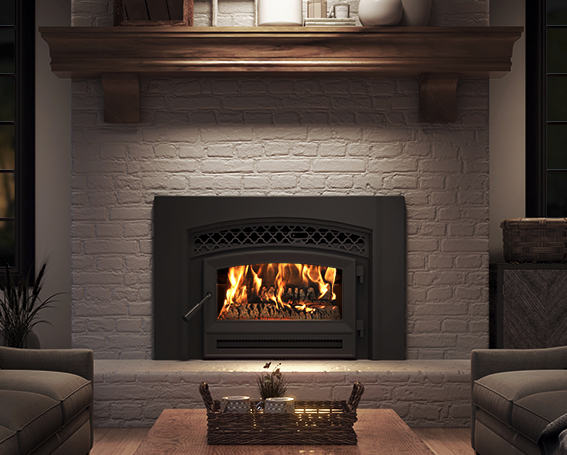APPLIANCE PERFORMANCE (1)
| Fuel type : |
Dry cordwood (16" recommended) |
| Recommended heating area-ft² : () |
250 - 1,200 |
| Overall firebox volume-ft³ : |
1.2 |
| EPA loading volume-ft³ : |
1.03 |
| Maximum heat output-dry cordwood : (2) |
45,000 BTU/h (13.16 kW) |
| Overall heat output rate < : (2) (3) |
8,471 BTU/h (2.48 kW) to 32,293 BTU/h (9.46 kW) |
| Average overall efficiency (dry cordwood) : (3) |
75 % (HHV) (4) |
80 % (LHV) (5) |
| Optimum efficiency : (6) (7) |
82 % |
| Optimum heat transfer efficiency : (8) |
78 % |
| Average particulate emissions rate : (9) |
1.5 g/h |
| Average CO : (10) |
34 g/h |
(1) Values are as measured per test method, except for the recommended heating area, firebox volume, maximum burn time and maximum heat output.
() Recommended heating area and maximum burn time may vary subject to location in home, chimney draft,heat loss factors, climate, fuel type and other variables. The recommended heated area for a given appliance is defined by the manufacturer as its capacity to maintain a minimum acceptable temperature in the designated area in case of a power failure.
(2) The maximum heat output (dry cordwood) is based on a loading density varying between 15 lb/ft³ and 20 lb/ft³ and reloading intervals ranging from 60 to 120 minutes. Other performances are based on a fuel load prescribed by the standard without any reloading between start and finish. The specified loading density varies between 7 lb/ft³ and 12 lb/ft³. The moisture content is between 19% and 25%.
(3) As measured per CSA B415.1-10 stack loss method.
(4) Higher Heating Value of the fuel.
(5) Lower Heating Value of the fuel.
(6) Performances based on a fuel load prescribed by the standard at 7 lb/ft³ and with a moisture content between 19% and 25%.
(7) Optimum overall efficiency at a specific burn rate (LHV).
(8) The optimum heat transfer efficiency is for the low burn rate (using HHV) and represents the appliance’s ability to convert the energy contained in the wood logs into energy transferred to the room in the form of heat and does not take into account the chemical losses during combustion.
(9) This appliance is officially tested and certified by an independent agency.
(10) Carbon monoxyde.

